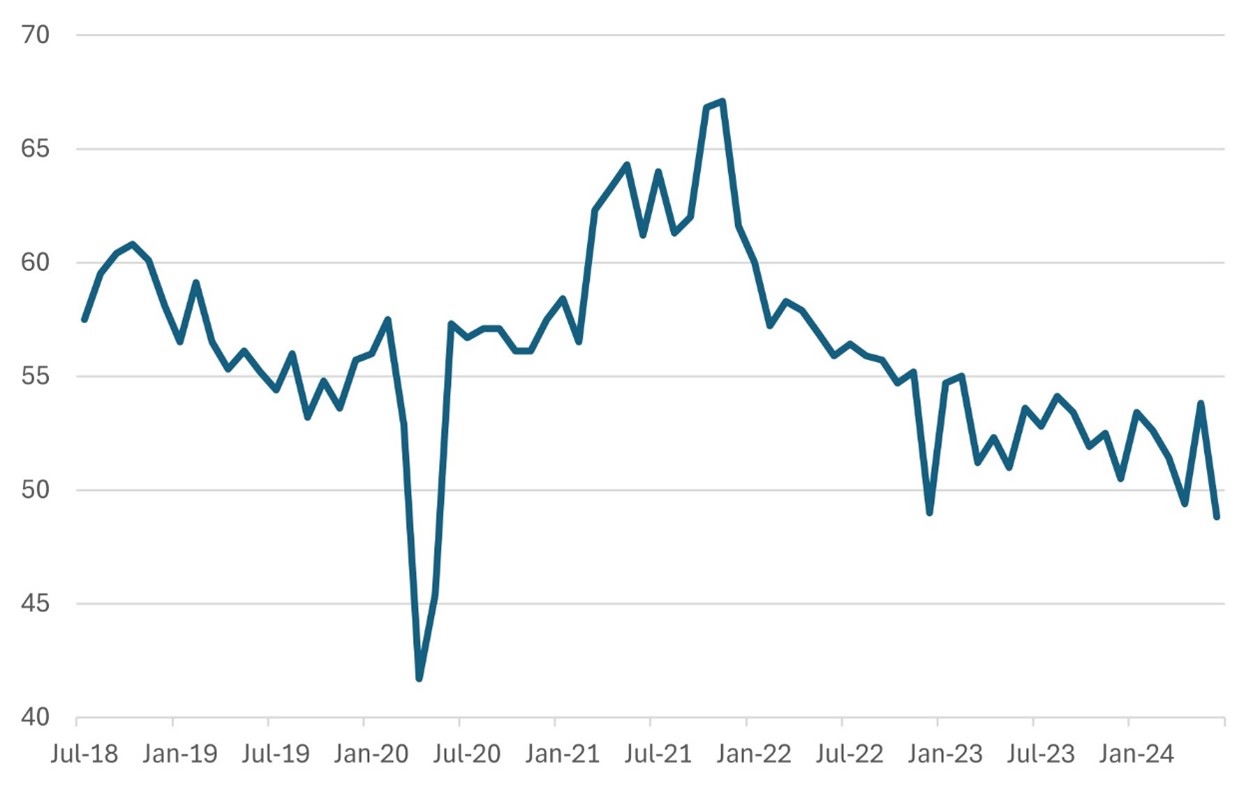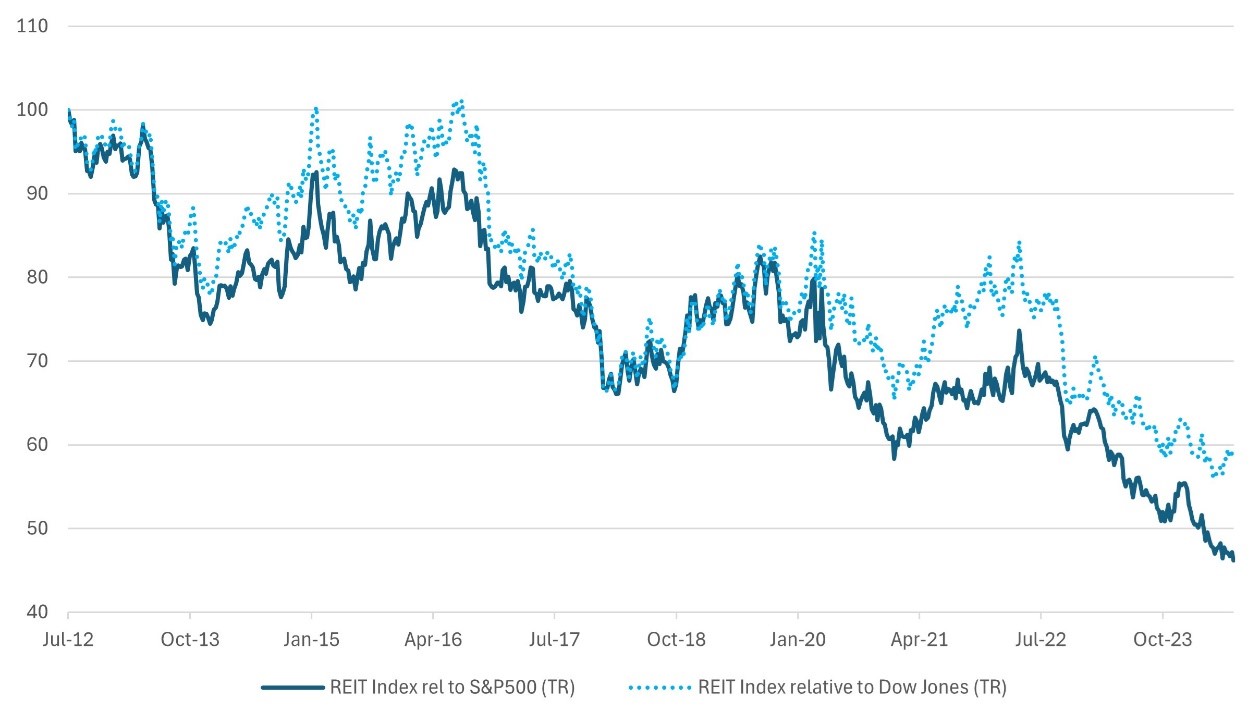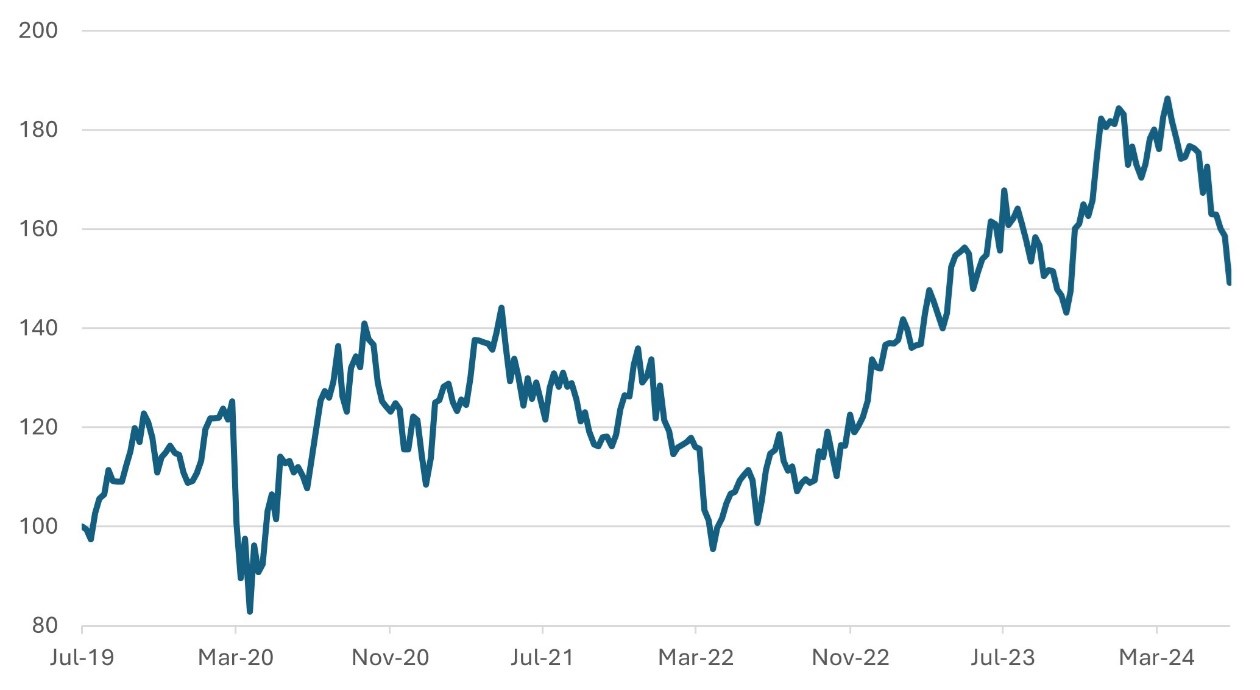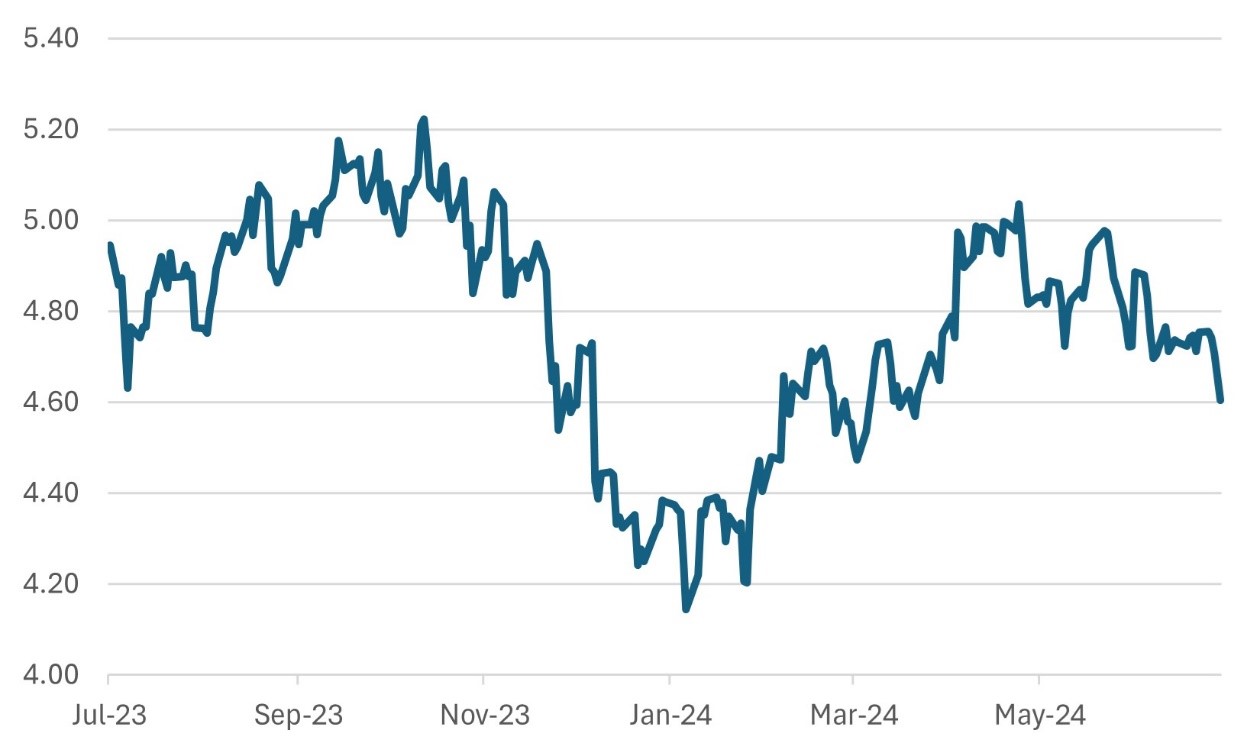By Falco
08 Jul 2024
• US economic data currently lends itself to earlier rate cuts
• The ISM Service Sector index was sharply weaker
• The Fed might consider a rate cut at its July meeting
• We expect selective interest rate-sensitive sectors to perform
• US 2-year government bond yield on track to decline to 4.2%
Maybe, just maybe, there could be a Fed rate cut at the next FOMC meeting in July
The weakness in US economic data of late has increased the possibility of an earlier-than-expected Fed rate cut, or, at the very least, a shift in the Federal Reserve's signalling about the pace of the cuts. We recently expressed our belief that the Fed governors erred in resetting their dot plot to anticipate just one rate cut before the end of the year—a downgrade from the three rate cuts they had indicated three months earlier.
Economic data releases of late have reported weaker US economic growth and lower inflation. Investors could, therefore, shift their previous focus on sticky inflation to a slowing rate of economic growth, potentially increasing market volatility. Nevertheless, investors appear to be welcoming the string of weaker-than-expected economic reports, viewing them as increasing the likelihood that the Fed will start reducing rates sooner rather than later. Although this could be a short-term positive for the market, it is crucial that investors remain mindful of the potential depth of economic weakness before the Fed begins its rate-cut cycle.
To begin with, the labour market is showing multiple signs of softening. Weekly unemployment claims have held steady around 238,000, but the number of continuing claims has risen to 1.86 million, the highest since November 2021. The implication of the data is that the unemployed are having more difficulty finding jobs. According to ADP, the private sector added 150,000 jobs last month—the smallest increase in five months—with most of these jobs (63%) in the leisure and hospitality sector. While wage growth over the past year was 4.9%—the smallest increase in three years—this is a positive sign for disinflation, which brings us closer to the Fed's 2% inflation target.
Another important metric, the ISM Non-Manufacturing Purchasing Manager's Index (PMI) fell five points in June to 48.8, the lowest level in four years, and back into contractionary territory for the second time in three months. This drop was driven by sharp declines in production and new orders. The weak data is not universal, however. The S&P Global's Services PMI rose to 55.3, indicating the sharpest rate of expansion since April 2022. Given the differences in the companies surveyed by the two firms, we must consider both in aggregate to understand the direction of the service sector accurately.
Chart 1: ISM Service Sector Index Weakness

Source: Bloomberg
The softening labour market and early signs of consumer fatigue as reflected in the ISM data are leading indicators that the rate of economic growth is meaningfully slowing—and inflation will follow. Once economic activity begins to decline, it typically doesn't reverse course, suggesting that disinflation should continue. The data flow provides the Fed with the excuse to signal that a rate cut is coming sooner rather than later.
The Fed may reconsider the pace of rate cuts
Fed Chairman Jerome Powell and several other officials have publicly stated that they can wait for additional confirmation that disinflation is well-entrenched due to the economy's perceived strength. However, there is scope for a change in the FOMC’s stance at the next Fed meeting scheduled on 30-31 July, as the rate of economic growth may have weakened significantly by then. The possibility of a July rate cut, currently at 8% according to the Fed Fund futures, may increase substantially. While a cut at that meeting may not entirely be a possibility, the Fed might hint strongly that, provided economic data continues trending in the same direction, it would cut rates at the next meeting.
Chart 2: The market prices a near zero probability of a Fed rate cut in July

Source: Bloomberg
In the first instance, we expect the increased prospect of an early rate cut to be welcomed by the market, even if it comes off the back of weaker economic growth data. If interest rates were to fall, some sectors stand to gain more than others and the REIT sector, which has been a serial underperformer, could garner increased investor attention. REITs’ perennial underperformance is evident whether you look at the performance versus a tech-inspired S&P500 index or against the old economy Dow Jones index. While investors may worry that they might be catching a falling knife, the sector has at least started showing some outperformance versus the Dow Jones index and that’s quite a breather!
Chart 3: S&P500 REIT index (TR) relative to S&P500 (TR) and Dow Jones (TR)

Source: Bloomberg
An easier tactical call, however, may be the S&P Homebuilding sector, which has already performed strongly versus the S&P 500 since 2022. The recent correction in the sector presents a buying opportunity, given the hopes that an early drop in policy rates could lead to improved demand for homes and help the sector stage a rebound. Long-term mortgage rates are at a three-month low, although they remain substantially higher than the 3.0% level seen in 2021. House prices have stayed high, supported by still very low inventories and substantial pent-up demand. As a result, the homebuilding sector could experience a significant uptick if the Fed signals an earlier rate cut, driving improved market sentiment and increased home buying activity.
Chart 4: S&P500 Homebuilding index (TR) relative to S&P500 (TR)

Source: Bloomberg
US 2-year bonds the obvious beneficiary
In the bond market we see an opportunity in shorter-dated bonds with the 2-year US government bond yield at 4.60%. We highlighted this at the 4.70% level, and we would target a drop in the yield to 4.20%.
Chart 5: US 2-year bond on track to drop to 4.2%

Source: Bloomberg
Gary Dugan - Investment Committee Member
Bill O'Neill - Non-Executive Director & Investor Committee Chairman
8th July 2024
The information contained within is for educational and informational purposes ONLY. It is not intended nor should it be considered an invitation or inducement to buy or sell a security or securities noted within nor should it be viewed as a communication intended to persuade or incite you to buy or sell security or securities noted within. Any commentary provided is the opinion of the author and should not be considered a personalised recommendation. The information contained within should not be a person's sole basis for making an investment decision. Please contact your financial professional at Falco Private Wealth before making an investment decision. Falco Private Wealth are Authorised and Regulated by the Financial Conduct Authority. Registered in England: 11073543 at Millhouse, 32-38 East Street, Rochford, Essex SS4 1DB
